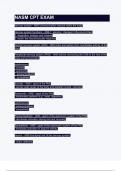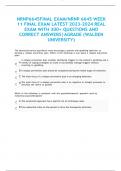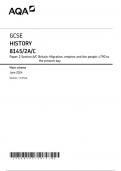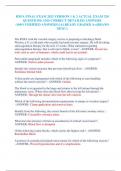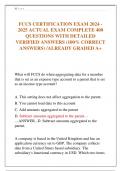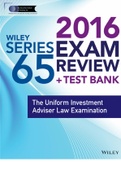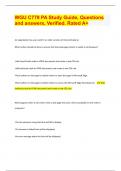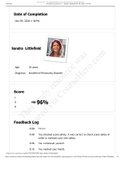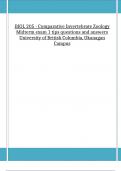Exam (elaborations)
NASM CPT EXAM Questions with 100% Actual correct answers | verified | latest update | Graded A+ | Already Passed | Complete Solution
- Module
- 2024 TEST PREP CERTIFICATION
- Institution
- 2024 TEST PREP CERTIFICATION
NASM CPT EXAM Questions with 100% Actual correct answers | verified | latest update | Graded A+ | Already Passed | Complete Solution
[Show more]
